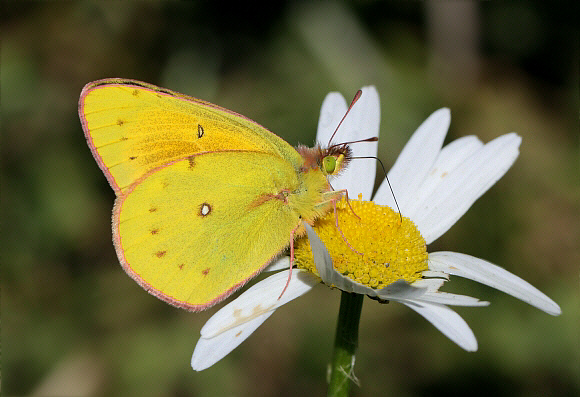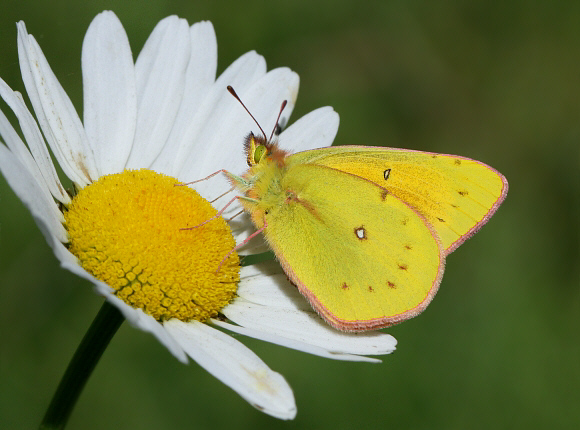
Introduction
Butterflies in the subfamily Coliadinae, which include the Brimstones, Sulphurs, Grass Yellows and Clouded Yellows, are found in all parts of the world, and total about 300 species. Most are migratory in behaviour – Colias crocea for example migrates each summer from north Africa to England, and Phoebis agarithe migrates seasonally from the Amazon lowlands to moderate altitudes in the Andes.
Colias lesbia is one of several Clouded Yellow species which breed at high altitudes in the Andes, and is also migratory in behaviour, crossing seasonally from north to south along the Andean range, and also from the Pacific slope to the eastern Andes.
The butterfly occurs from Colombia to Chile and Argentina.

Habitats
This species breeds on grasslands and lightly grazed pastures at elevations of between 2500-4000m. These high altitude habitats are above the cloud line and bathed in warm sunshine throughout most of the year. Daytime temperatures can be as high as 25°C, but can fall to below freezing point at night.
Lifecycle
The eggs of Colias species are typically bottle-shaped, ribbed vertically, in most species are creamy yellow or pale green when first laid, later becoming orange or dark crimson. They are nearly always laid singly, on the leaves of the larval foodplants.
The caterpillars are typically green, with a white or yellow lateral line that is sometimes edged with by a series or black or pinkish dashes. The spiracles are usually highlighted in yellow or orange.
Colias lesbia has been observed ovipositing on alfalfa ( lucerne ) Medicago in the Urubamba valley in Peru. This is a fodder crop alien to Peru. The natural foodplant is likely to be a related leguminous plant, e.g. some North American Colias species feed on Lotus, Vicia, Trifolium and Astragalus.
The chrysalises of Colias are typically green or straw coloured, and fixed vertically to a stem by the cremaster and a silken girdle.
Adult behaviour
The adults are extremely mobile and usually seen as wandering singletons, but they can be found in colonies of several dozen individuals at their breeding sites.
Males sometimes settle as damp mud to imbibe mineralised moisture. They patrol back and forth across their grassy habitats in search of potential mates, interrupting their search periodically to nectar at tall “ox-eye” daises, or to rest on bare ground. They repeat this cycle of searching, feeding and resting continually throughout the morning, but tend to disappear from view by mid-afternoon.
